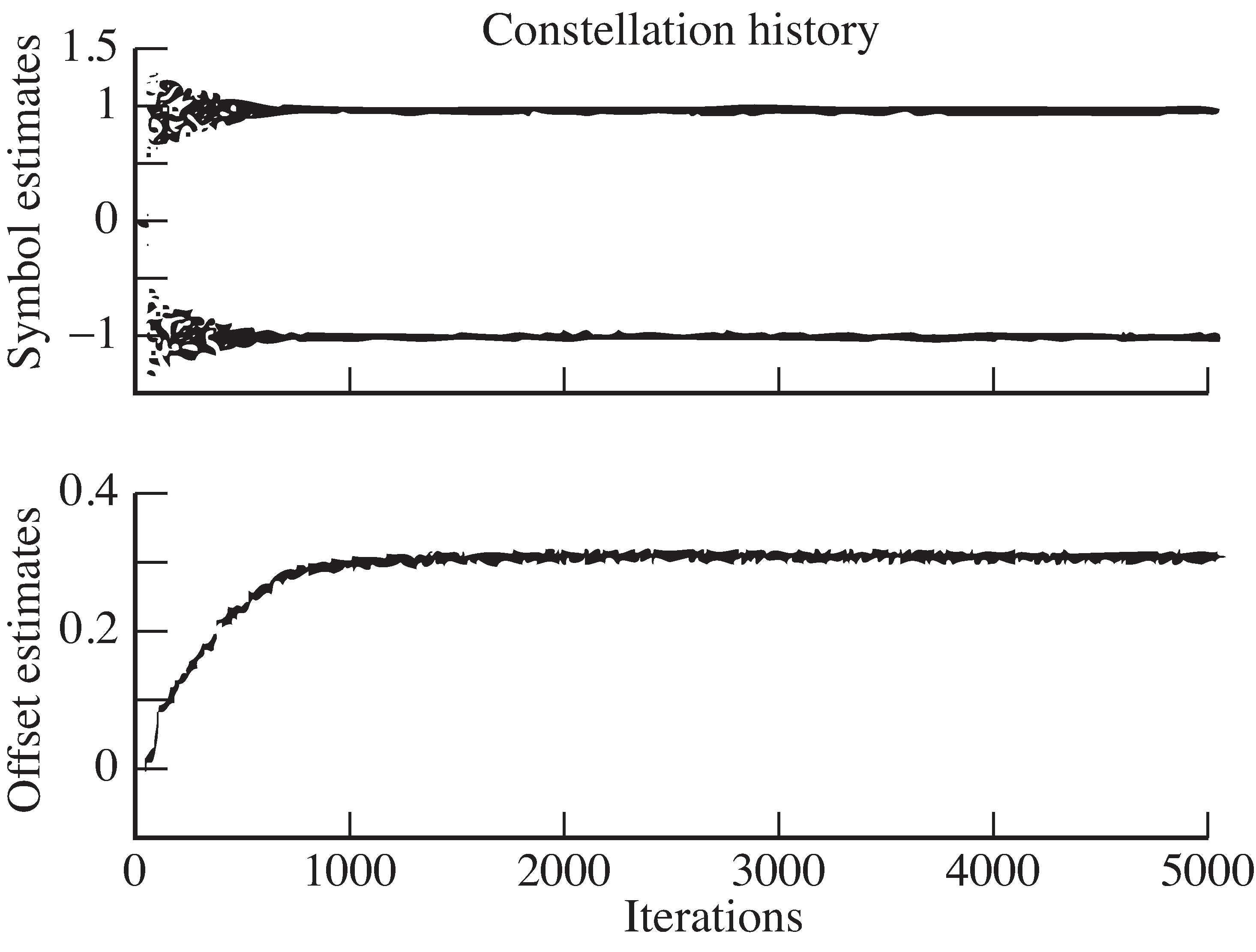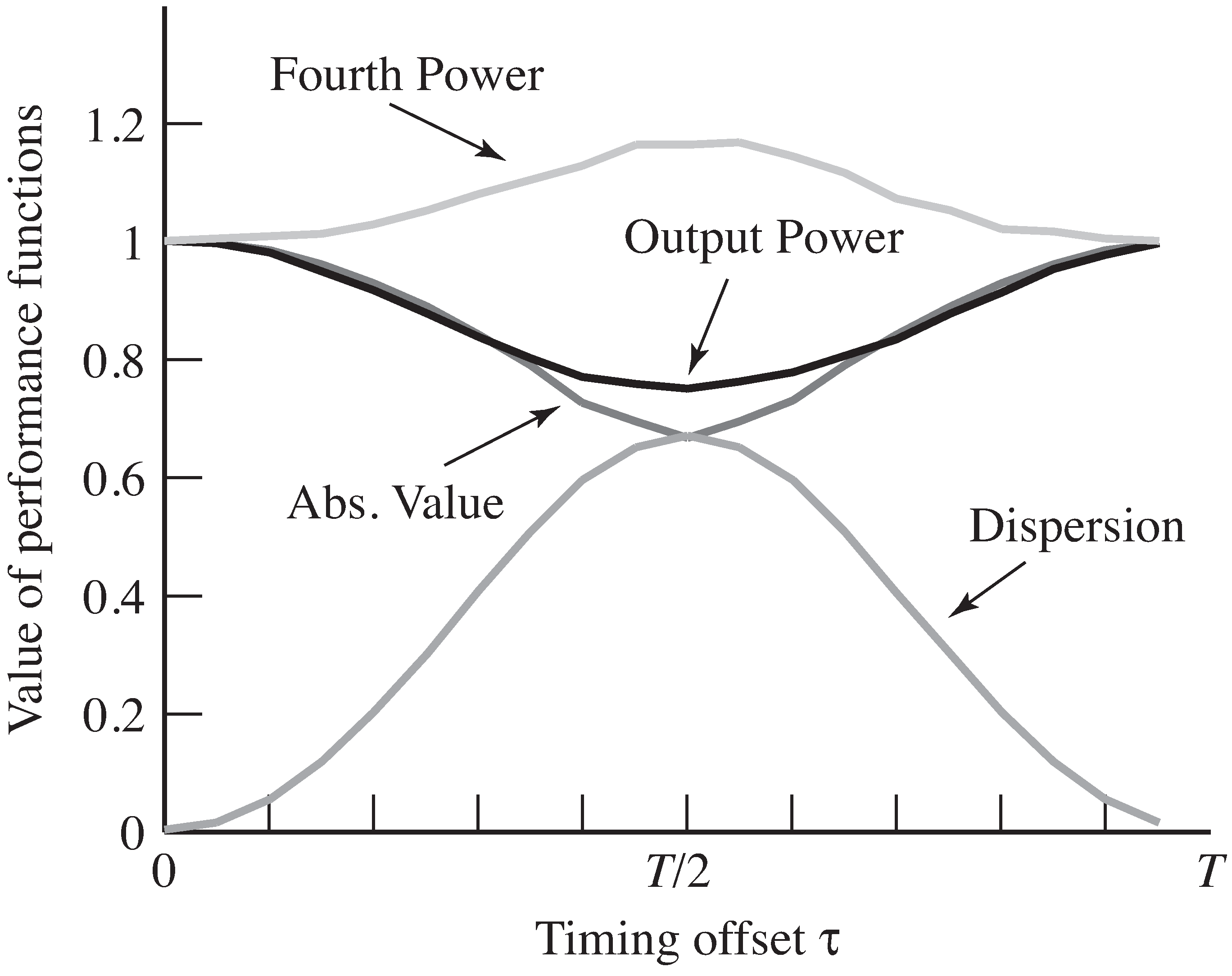| << Chapter < Page | Chapter >> Page > |
The error surface for the output power maximization algorithm
can be drawn using thesame “experimental” method as was used in
clockrecDDcost.m . Replacing the line that calculates theperformance function with
cost(i)=sum(x.^2)/length(x); calculates the error surface for the output power algorithm
[link] .
[link] shows this, along with
three variants:


Clearly, some of these require maximization (the output
power and the absolute value), while othersrequire minimization (the fourth power and the dispersion).
While they all behave more or lessanalogously in this easy setting (the figure shows the 2-PAM case
with a SRRC pulse shape with
beta=0.5 ),
the maxima (or minima) may occur atdifferent values of
in more extreme settings.
TRUE or FALSE: The optimum settings oftiming recovery via output power maximization with and without intersymbol interference in the analog channelare the same.
Use the code in
clockrecOP.m to “play with” the output
power clock recovery algorithm.How does
mu affect the convergence rate? What range of stepsizes
works? How does the signal constellation ofthe input affect the convergent value of
tau (try 4-PAM and 8-PAM)?
Implement a rectangular pulse shape. Does this work better or worse than the SRRC?
Add noise to the signal (add a zero mean noise
to the received signal using theM
atlab
randn function).
How does this affect the convergence of the timing offset parameter
tau . Does it change the final converged value?
Modify
clockrecOP.m by setting
toffset=-1 . This starts the iteration in a closed eye
situation. How many iterations does it take to open the eye?What is the convergent value?
Try other values of
toffset .
Can you predict what the final convergent value will be?Try
toffset=-2.3 . Now let the oversampling factor be
and answer the same questions.
Redo [link] using a sinc pulse shape. What happens to the Output Power performance function?
Redo [link] using a -wide Hamming pulse shape. Which of the four performance functions need to be minimizedand which need to be maximized?
Consider the sampled version of the baseband signal recovered by the receiver in a 2-PAM communication system with source alphabet . In ideal circumstances, the baud-timing variable could be set so exactly matched the source symbol sequence at the transmitter.Suppose is selected as the value that optimizes
for a suitably large .

Notification Switch
Would you like to follow the 'Software receiver design' conversation and receive update notifications?